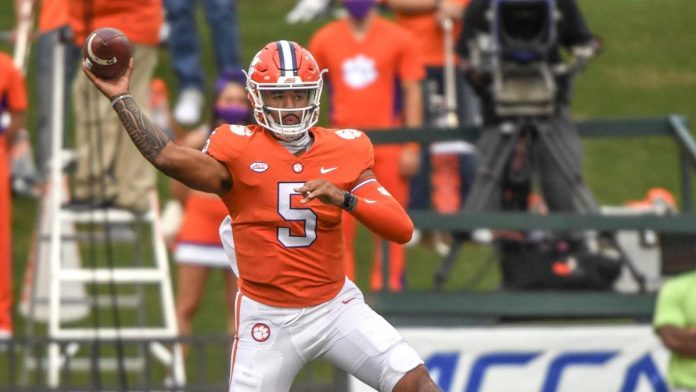Recently, the ACC has been regarded as one of the weaker conferences of the Power Five. Since 2015, Clemson has been in the College Football Playoffs each season but the requirements to reach them were much more difficult than that of an SEC school per se.
2020 brought a rare circumstance, in which the ACC had two playoff teams but for the purpose of continuity, I will exclude Notre Dame from this discussion.
This feature looks at how the ACC should be regarded as a league in 2021 and whether it is any different from previous years.
From a Practical Sense
The ACC will play 15 out of conference games against Power Five teams (excluding Notre Dame), nine of which will be against the SEC.
In fact, this year’s ACC vs SEC matchups will hold even more stake, considering Clemson will be tested early with a neutral site matchup against Georgia. Obviously, this game will determine Clemson’s playoff chances but if the ACC is reputable enough, can they still get in with a 12-1 record and a 14 point loss to the Bulldogs? If Clemson defeats Georgia but North Carolina exceeds expectations and wins the ACC at 13-0, can the conference sneak both teams in?
Each inter-conference game will contribute to the picture. The metrics use transitive property logic to compare teams; if Louisville beats Ole Miss, for example, Clemson and UNC will benefit because they play common opponents.
So let’s look into how strong the conference is expected to actually be this year.
Trends Over the Last Five Years
As I prefaced, the ACC has spiraled downward. Here is what the Football Outsiders’ F+ index, which averages two of the most reputable tempo and opponent-adjusted metric, says.
| Year | Teams in Top 25 | Average Ranking | Conference Rank |
| 2016 | 7 | 25 | 2nd |
| 2017 | 4 | 39 | 4th |
| 2018 | 1 | 60 | 5th |
| 2019 | 1 | 56 | 5th |
| 2020 | 3 | 53 | 4th |
The reason why the conference has fallen behind since 2016 is not entirely clear. The recruiting in the conference has not weakened over the past decade. Perhaps, the increased use of the transfer portal allowed athletes to go to more reputable brands in the SEC and Big Ten.
But the bottom line is that while Florida State and Miami have not held up their end of the bargain, the middle of the pack has equally faltered. 2021 may be a different story though.
The Longer-Lasting Effect of a Unique 2020
It is certainly not unknown that the SEC had a record number of draft picks in 2020. The ACC actually did have the second most but one thing is true about them compared to the premier conference in the country — veteran talent is returning.
Because there is a large group of seniors who gained an extra year of eligibility due to COVID, there will be more experience in college locker rooms than ever before — and this will affect some conferences more than others.
Avg P5 returning production (at the moment):
Pac-12 81%
ACC 74%
B12 73%
B1G 71%
SEC 66%UCLA 2nd overall at 91%, and Wazzu, Oregon State, Utah, Oregon, Colorado and Washington are all currently in the top 15. An interesting side effect of their tiny season, perhaps.
— Bill Connelly (@ESPN_BillC) January 31, 2021
It is not atypical for the SEC to fall behind in this ranking but the COVID effect has made the deviation more drastic than ever.
The Pac-12 obviously serves to benefit the most from this unique offseason. They usually trade places at the bottom of the power conference hierarchy with the ACC, so this will provide a much needed boost.
The ACC, Big Ten, and Big 12 are more clustered but they all have a major advantage over the conference that consistently dominates college football. Given how indicative this metric has been in the past, the COVID effect may actually bring the power conferences to a more level playing field.
The Bottom Line
Obviously, the picture will be much clearer after a few weeks of games are played but we should not expect drastic jumps from the ACC. Significant improvement is possible but they should still be towards the bottom of the power conference hierarchy. There are no predictive metrics that I have truly grown to trust but what we could hope is that the returning production metrics accurately project more even competition in the Power Five.






